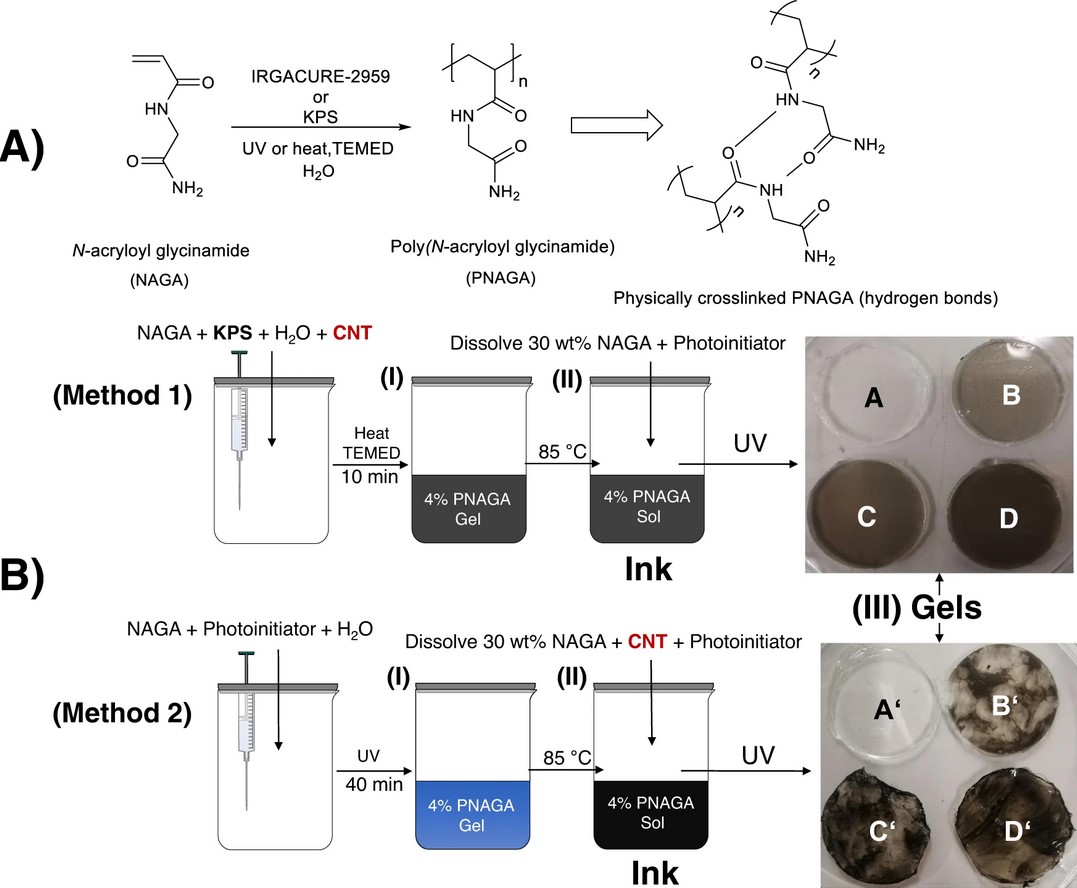News
Printable Poly(N-acryloyl glycinamide) Nanocomposite Hydrogel Formulations
19.06.2023
Majstorovic, Nikola ; Zahedtalaban, Mohamed ; Agarwal, Seema
Polymer Journal, 2023. https://doi.org/10.1038/s41428-023-00798-1
Printable synthetic polymer formulations leading to hydrogels with high strengths, swelling resistance, and bioactivities are required to control the mechanical and functional characteristics of biological scaffolds. Here, we present nanocomposite hydrogels prepared with the upper critical solution (UCST)-type polymer ink poly(N-acryloyl glycinamide) (PNAGA) and different concentrations of carbon nanotubes (CNTs). Nanofiller CNTs are recommended for increasing the bioactivities of hydrogel scaffolds. Printing methods were established in which the CNTs were included before and after the fabrication of the ink. The methods were compared to each other and their temperatures and shear-thinning properties were determined from the rheologies. A self-thickening method was utilized for 3D printing of nanocomposite constructs, and the printabilities varied with the CNT content and preparation method. After photopolymerization of the printed constructs, the nanocomposite hydrogel exhibited a slightly higher mechanical strength (15,500 Pa, Emod = 0.697 ± 0.222 MPa), great elasticity (elongation ~500%) and an electrical conductivity (5.2‧10−4 ± 1.5‧10−4 S‧m−1) comparable to that of the neat PNAGA hydrogel. Since high-strength constructs can be 3D printed with good resolution and low cytotoxicity, these nanocomposite hydrogel scaffolds could be used in biological and tissue engineering applications.


